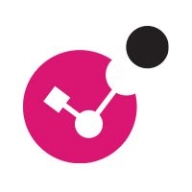


Check Point CloudGuard CNAPP and Microsoft Defender for Cloud Apps are major players in the cloud security domain. CloudGuard CNAPP tends to have an edge with its real-time visibility and security orchestration, while Defender for Cloud Apps excels in threat detection, particularly for Microsoft-centric enterprises.
Features:CloudGuard CNAPP provides continuous compliance monitoring, IAM control, and auto-remediation, offering comprehensive security management. It also delivers real-time visibility across cloud assets. Microsoft Defender for Cloud Apps seamlessly integrates with Microsoft products, focusing on extensive threat detection and robust data protection, which is advantageous for enterprises utilizing Microsoft's ecosystem.
Room for Improvement:CloudGuard CNAPP could enhance integration with third-party tools, provide better policy validation, and improve documentation. Its reporting features need refinement to reduce false positives. Microsoft Defender for Cloud Apps could benefit from better integration with non-Microsoft environments, improved report generation, and simpler licensing options. Enhancing response times to alerts and providing more streamlined user interfaces are also areas to work on.
Ease of Deployment and Customer Service:CloudGuard CNAPP is praised for its straightforward setup, being effective in both public and hybrid cloud scenarios, with commendable customer service support, though response times could be faster. Microsoft's deployment benefits from strong integration with other Microsoft services, supported by reliable customer service, with a desire for more comprehensive multi-cloud support.
Pricing and ROI:CloudGuard CNAPP offers competitive pricing with a flexible licensing model based on cloud assets, resulting in high ROI due to reduced compliance costs and operational efficiency. In contrast, Microsoft Defender for Cloud Apps, often included in Microsoft 365 packages, can be perceived as costly but provides significant value in a Microsoft ecosystem, delivering enhanced security and seamless integration for users.
| Product | Market Share (%) |
|---|---|
| Check Point CloudGuard CNAPP | 1.3% |
| Wiz | 10.5% |
| Tenable Nessus | 7.3% |
| Other | 80.9% |
| Product | Market Share (%) |
|---|---|
| Microsoft Defender for Cloud Apps | 8.8% |
| Prisma Access by Palo Alto Networks | 17.8% |
| Netskope | 15.0% |
| Other | 58.4% |



| Company Size | Count |
|---|---|
| Small Business | 51 |
| Midsize Enterprise | 17 |
| Large Enterprise | 57 |
| Company Size | Count |
|---|---|
| Small Business | 13 |
| Midsize Enterprise | 10 |
| Large Enterprise | 19 |
Zafran Security integrates with existing security tools to identify and mitigate vulnerabilities effectively, proving that most critical vulnerabilities are not exploitable, optimizing threat management.
Zafran Security introduces an innovative operating model for managing security threats and vulnerabilities. By leveraging the threat exposure management platform, it pinpoints and prioritizes exploitable vulnerabilities, reducing risk through immediate remediation. This platform enhances your hybrid cloud security by normalizing vulnerability signals and integrating specific IT context data, such as CVE runtime presence and internet asset reachability, into its analysis. No longer reliant on patch windows, Zafran Security allows you to manage risks actively.
What are the key features of Zafran Security?
What benefits can users expect from Zafran Security?
In industries where security is paramount, such as finance and healthcare, Zafran Security provides invaluable protection by ensuring that only exploitable vulnerabilities are addressed. It allows entities to maintain robust security measures while allocating resources efficiently, fitting seamlessly into existing security strategies.
Check Point CloudGuard CNAPP offers comprehensive cloud security with features like dynamic access control, asset protection, and compliance checks, tailored for organizations seeking enhanced governance across AWS, Azure, and GCP platforms.
Check Point CloudGuard CNAPP provides robust capabilities, including centralized firewall management, IAM scanning, and real-time visibility. Its strengths lie in predictive visualization, threat intelligence, and auto-remediation, making it a valuable tool for risk mitigation and compliance management. The platform's integration and responsiveness enhance cloud security, ensuring alignment with industry standards and effective threat protection.
What are the key features of Check Point CloudGuard CNAPP?Organizations in finance, healthcare, and retail frequently implement Check Point CloudGuard CNAPP for compliance and security across cloud environments. It assists with workload protection, threat detection, and regulatory obligation fulfillment, proving effective for securing applications and monitoring API interactions.
Microsoft Defender for Cloud Apps is a comprehensive security solution that provides protection for cloud-based applications and services. It offers real-time threat detection and response, as well as advanced analytics and reporting capabilities. With Defender for Cloud Apps, organizations can ensure the security of their cloud environments and safeguard against cyber threats. Whether you're running SaaS applications, IaaS workloads, or PaaS services, Microsoft Defender for Cloud Apps can help you secure your cloud environment and protect your business from cyber threats.
Reviews from Real Users
Ram-Krish, Cloud Security & Governance at a financial services firm, says that Microsoft Defender for Cloud Apps "Integrates well and helps us in protecting sensitive information, but takes time to scan and apply the policies and cannot detect everything we need".
PeerSpot user, Senior Cloud & Security Consultant at a tech services, writes that Microsoft Defender for Cloud Apps "Great for monitoring user activity and protecting data while integrating well with other applications".
Simon Burgess,Infrastructure Engineer at SBITSC, states that Microsoft Defender for Cloud Apps is "A fluid, intelligent product for great visibility, centralized management, and increased uptime".
We monitor all Vulnerability Management reviews to prevent fraudulent reviews and keep review quality high. We do not post reviews by company employees or direct competitors. We validate each review for authenticity via cross-reference with LinkedIn, and personal follow-up with the reviewer when necessary.